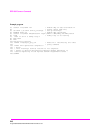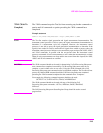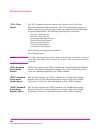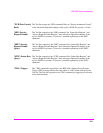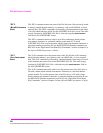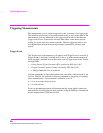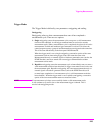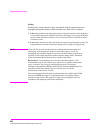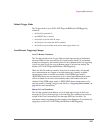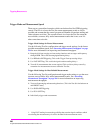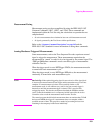
226
S:\agilent\8920\8920b\PRGGUIDE\BOOK\SECTIONS\tm.sec
Triggering Measurements
Settling
Settling refers to the amount of delay introduced to allow signal transients to
propagate through the analysis chain and settle out. There are two options:
1. Full settling introduces the appropriate delay for all signal transients which might have
occurred at the front panel at just the same time as the trigger event, to pass through the
analysis chain and settle out. Delays are also inserted to allow for internal hardware
transients to settle.
2. Fast settling introduces no delay for internal or external signal transients to settle. The
programmer must account for transient settling before issuing the Trigger Event.
NOTE: There will still be delays introduced by the couplings between autotuning and
autoranging. If the programmer wishes to remove these delays as well, all
autoranging and autotuning functions must be turned OFF and the program must
explicitly set the ranging amplifiers and the frequency tuning. Delays introduced
by the measurement processes themselves cannot be eliminated.
Bus Lock Up: If a measurement cycle does not successfully obtain a valid
measurement result, it will continue to try until it does or until the measurement
trigger is aborted. This is true for both retriggering modes. This has the
consequence that both the GPIB bus and the Active Controller handshake are in a
temporary holdoff state while the Active Controller waits to read the
measurement result from the Test Set.
The control program should include measurement time-out routines that CLEAR
the bus and ABORt the trigger if a measurement does not complete within a
specified amount of time. This provides a method of preventing the bus from
remaining in the temporary holdoff state indefinitely.



